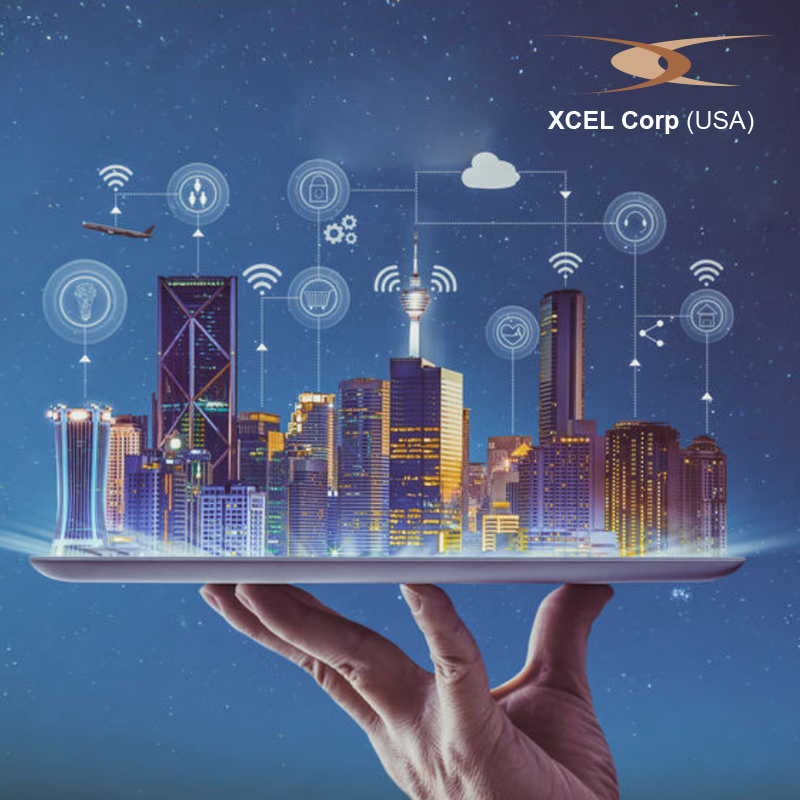Agile just entered the testing platform with a bang. According to a report over 95% of the organizations practice agile in some form or the other. The Agile Methodology is also considered as the gold standard among others as it propagates adaptive planning, continuous improvement and early deliveries while being able to respond to contingencies and changes quickly and easily. Which means one of the biggest benefits of Agile remains the ability to trace, track and respond.
XCEL Corp has always stayed on top of things as far as response and project practices are concerned. That is why today even in our testing environments, we incorporate Agile into every project for smooth and effective transitions and deliveries.
About Agile Methodology
Regarded as one of the most flexible development methodologies, Agile divides each part of the project management process separately in order to create a constantly working applied project. The interaction between specialists is carried out within the framework of a self-organizing, project team, while the requirements for each project are decided quickly. This also ensures a highly-satisfied target audience with the quick release of the product into the market.
The methodology is highly malleable as it anticipates change while even allowing small modifications to be executed by clients without disrupting project schedules or creating budgetary constraints. In Agile, the project is broken down into multiple prioritized requirements with an iterative cycle, as each of them is delivered individually.
At XCEL Corp, both the development team and the client review each of these iterations. The next step in the development is determined by the assessment and outcome of all of these iterations. We hold prescheduled, regular meetings with the client to review all previous iterations and the work completed, to plan for the imminent recapitulation. The expected changes, time estimates, priorities, budgets and other such detailed goals expected, are clearly set in each of these meetings.
From the very beginning of the development cycle, Agile gives a lot of importance to customer participation. One of the main objectives of adopting this methodology is to keep the client involved so that, in the end, we have a happy and satisfied customer. Identifying defects and challenges early would be impossible with traditional project management methodologies and this also where Agile fills the gap.
Advantages of Agile for businesses
This proven project management model is known to increase client satisfaction rates while bringing value into the business. Some of the biggest benefits that Agile provides are:
- Improvements that involve the client enabling them to make decisions throughout the project
- Open communication is encouraged among team members and clients, alike
- It gives businesses a competitive advantage, where defects are caught early and rectified immediately, without having to make elaborate changes to the development process. Another added advantage is that these imperfections do not leak towards the end of the project.
- Time spent on evaluation is only a small part of the mission rather than its entirety
- Changes implemented are quicker due to the consistent evaluations and the product is delivered as expected
- Project transparency is maintained as the systems allow everyone involved to access data progress
Types of Agile
Scrum
One of the more popular software testing methodologies that are used by almost 60% of the organizations, according to research, is Scrum. This focuses on defining the key project goals and features and offers a highly iterative approach even before each sprint. The idea is to provide value quickly while reducing risk.

Figure 1.0 Basic Scrum Process
In Scrum, first, there is a user story, and then the features are outlined. Thereafter, a task list is prepared that cycles through a series of sprints provided in small bursts of equal quantity at specified intervals. The questions have to be answered at the very start so that the team can work flexibly and can avoid shifting priorities.
Difference between Scrum and Waterfall
Several testing and bug fixing cycles are involved in Waterfall before the release of the product. But Scrum is collaborative and iterative and prepares documentation during completion. Waterfall involves heavy documentation requirements at the beginning itself, making changes rather difficult.
Best practices
XCEL Corp adopts the following best practices for Scrum:
Our team of product owners, Scrum masters, developers and testers come together to determine the acceptance criteria, which, in turn, is based on communication. The code is then developed using these acceptance criteria while ensuring that the entire team approves it. Thereafter, solid production environments are used to test the code prior to deployment.
Kanban
Another upcoming but simple Agile-based methodology that finds itself more rooted in manufacturing, is Kanban. Developed by Toyota to improve productivity in its manufacturing units, the methodology encompasses a huge to-do list and yet comes with efficient tracking and tracing with development and testing well-entrenched within the current stages of their processes. While Scrum is predominantly time-based, Kanban does not stipulate end-times. This is because the methodology works on the basis of prioritization. Besides fewer planning meetings, the approach requires all the teams within the process to work in close coordination with each other, maintaining equal and well-paced project progress. In short, the developers cannot work faster than the testers because deficiencies are bound to crop up during at later stages. Overall, Kanban requires a lot of specialty, flexibility and adaptability because anyone on the team should be able to work anywhere to fill an opportunity or challenge.

Figure 2.0 Basic Kanban Process
Difference between Kanban and Waterfall
The requirements for Kanban and Waterfall more or less remain the same except that these can be modified as per testing requirements. Another differentiating factor is that Waterfall is heavily time-bound, while Kanban isn’t, but still plans its releases.
Best practices
As always experts at XCEL Corp ensure that we use the best practices for all the latest methodologies as outlined in the industry. We identify the right team of developers, testers, analysts and stakeholders who offer simple and smooth transitions through every phase of the project. Kanban methodologies are highly crucial to producing some of the quickest codes. Our testers ensure that the communication lines between all points are open. The team members also project flexibility towards taking roles outside of their core responsibilities. Everyone on the team becomes an owner of the project so that they work carefully to provide a highly-satisfying end-result.
XCEL Corp is a progress-driven organization that focuses on newer technologies, methodologies and practices introduced in the IT industry to deliver high-quality products that are sustainable and scalable into the future. Call us for all your Agile requirements.



